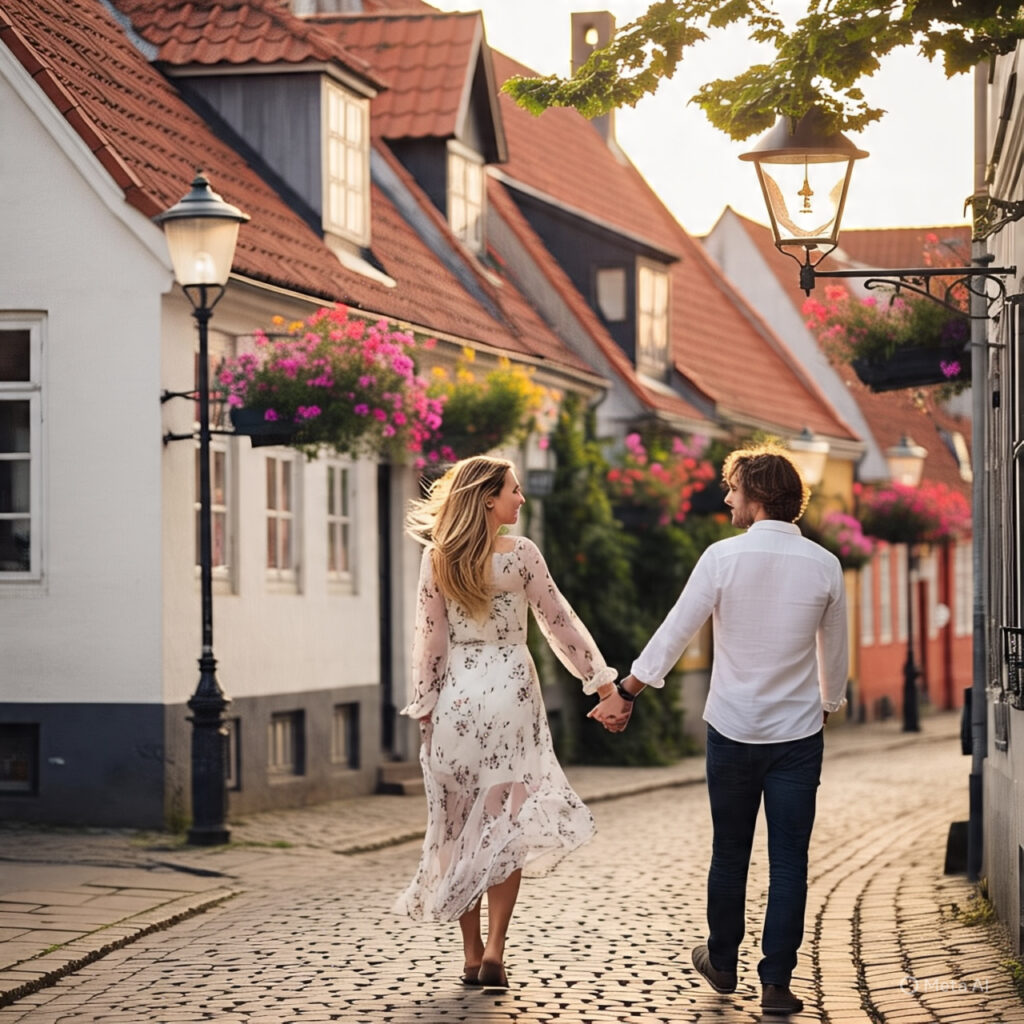Introduction
Have you ever wondered why Denmark consistently ranks as one of the happiest countries on Earth? It’s not just about stunning scenery and good food—it’s about a deeply rooted lifestyle that values balance, community, and simple pleasures. The Danish way of life is a blueprint for living well, sustainably, and meaningfully.
Danish Culture and Values

Community and Trust
Denmark thrives on social trust. People trust their government, their neighbors, and even strangers. It’s not unusual to leave babies in strollers outside cafés—it’s that safe and trusting.
Simplicity and Minimalism
From design to fashion to daily routines, Danes favor function over flash. Minimalist living is a norm, not a trend.
Work-Life Balance
Forget the grind culture. In Denmark, people leave work on time and value family dinners and personal time more than overtime bonuses.
The Concept of “Hygge”
What Is Hygge?
Pronounced “hoo-gah,” hygge is the feeling of cozy contentment and well-being. Think soft lighting, warm drinks, and good conversation.
How Danes Practice It
They create hygge through shared meals, candle-lit rooms, and unplugged evenings with family or friends.
Why It’s More Than Just Candles and Cocoa
Hygge is a cultural mindset—a way of slowing down and finding joy in the present moment.
Work Culture in Denmark
37-Hour Work Week
A standard full-time job in Denmark is just 37 hours per week, with many enjoying even shorter weeks.
Flexibility and Autonomy
Employers trust employees to manage their own schedules, encouraging independence and creativity.
Parental Leave and Employee Rights
New parents enjoy up to 52 weeks of leave, and workers have strong rights and job security.
Education and Learning
Free Education Model
Education is free from kindergarten to university, with students even receiving a monthly stipend.
Student Life in Denmark
Universities focus on collaboration and real-world problem-solving, not just tests.
Lifelong Learning Philosophy
Danes often pursue further education later in life—it’s normal and highly encouraged.
Danish Healthcare System
Universal Health Coverage
Every resident has access to free or low-cost healthcare funded by taxes.
Quality and Accessibility
Hospitals are modern, and waiting times are minimal for essential care.
Wellness and Prevention Culture
Regular checkups, mental health awareness, and prevention-first attitudes keep people healthier, longer.
Daily Life in Denmark
Transportation and Bicycles
Over 50% of Copenhagen residents commute by bike. Biking is part of the culture—rain or shine.
Food and Meal Times
Danes love open-faced sandwiches (smørrebrød) and prioritize sit-down dinners with family.
Family and Leisure Time
Family is central. Most people spend weekends with loved ones or in nature.
Sustainable Living
Green Architecture
Eco-friendly buildings and energy-efficient homes are everywhere in Denmark.
Renewable Energy
Over 50% of Denmark’s electricity comes from wind—a global leader in green power.
Recycling and Conscious Consumption
Danes are eco-conscious. Recycling, biking, and second-hand shopping are everyday choices.
Social Security and Welfare
Financial Safety Net
The welfare system provides unemployment benefits, pension plans, and support for all citizens.
Government Support Systems
Single parents, the elderly, and students all get the help they need to live with dignity.
Equality and Fairness
Income gaps are small. Denmark promotes equal opportunities for all.
Urban Life vs. Countryside
Copenhagen’s Urban Vibe
The capital is a modern, creative, and bike-friendly city full of culture and innovation.
Peaceful Danish Villages
Countryside living is quiet, picturesque, and community-driven—perfect for family life.
Lifestyle Differences
City life is fast-paced yet balanced; rural life is serene and tradition-rich.
Celebrations and Traditions
Christmas and Midsummer
These are the most celebrated holidays, full of lights, music, and community bonding.
Royal Family and National Identity
The monarchy is loved, and Danish pride runs deep—especially on Constitution Day.
Community Events
From flea markets to local festivals, Danes love coming together in meaningful ways.
Why Denmark Is Among the Happiest Countries
Social Cohesion
People feel connected and cared for, regardless of their income or job title.
Strong Institutions
The government is transparent, efficient, and genuinely serves the people.
Mental Well-Being
Access to mental health care and less societal pressure create a mentally balanced society.
Conclusion
The Denmark lifestyle is all about quality over quantity, connection over competition, and simplicity over stress. With its focus on community, balance, and sustainability, Denmark sets the gold standard for a modern, happy life. Whether you’re visiting or dreaming of moving, there’s so much to admire—and learn—from how the Danes live.
FAQs
1. What is “hygge” in Danish lifestyle?
It’s a cultural concept of coziness, comfort, and enjoying simple pleasures.
2. Is life in Denmark expensive?
Yes, but the high quality of life, free services, and strong salaries balance it out.
3. What language is spoken in Denmark?
Danish is the official language, but most people also speak fluent English.
4. How is the healthcare system in Denmark?
It’s public, universal, and high-quality, available to all residents.
5. What makes Denmark one of the happiest countries?
A mix of social security, work-life balance, trust, and community values.